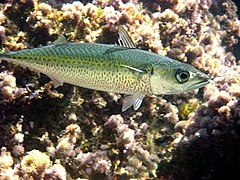Quadrigyridae is the only family within Gyracanthocephala, an order of parasitic worms of class Eoacanthocephala. This family contains two subfamilies, ten genera and about 92 species.

The thorny-headed worm family Polymorphidae contains endoparasites which as adults feed mainly in fish and aquatic birds. When this taxon was erected by Meyer in 1931, a subfamily Polymorphinae was established in it. As the Polymorphidae as presently understood would then be monotypic, with no basal genera outside the Polymorphinae, the proposed subfamily is redundant for the time being and therefore most modern treatments simply omit it. Polymorphus minutus is an economically significant parasite in goose and duck farming.
Mediorhynchus is a genus of small parasitic spiny-headed worms. Phylogenetic analysis has been conducted on two known species of Mediorhynchus and confirmed the placement along with the related genus Gigantorhynchus in the family Gigantorhynchida. The distinguishing features of this order among archiacanthocephalans is a divided proboscis. This genus contains fifty-eight species that are distributed globally. These worms exclusively parasitize birds by attaching themselves around the cloaca using their hook-covered proboscis. The bird hosts are of different orders.
Centrorhynchidae is a family of parasitic worms. Three species of these thorny-headed worms in the genus Centrorhynchus were found to parasitize birds of prey and owls Slovakia. These hosts include Buteo buteo, Buteo rufinus, Falco tinnunculus, Asio otus, Strix aluco, Strix uralensis and Tyto alba.
Arhythmacanthidae is a family of parasitic worms from the order Echinorhynchida.

Cavisomidae are a family of parasitic worms from the order Echinorhynchida.
Diplosentidae is a family of parasitic worms from the order Echinorhynchida.

Leptorhynchoididae is a family of parasitic worms from the order Echinorhynchida.

Neoechinorhynchidae is a family of parasitic worms from the order Neoechinorhynchida.

Rhadinorhynchidae is a family of parasitic worms from the order Echinorhynchida.
Plagiorhynchidae is a family of parasitic Acanthocephalan worms.

Transvenidae is a family of parasitic spiny-headed worms in the order Echinorhynchida. This family contains three species divided into two genera.
Diplosentis is a genus of worms belonging to the family Diplosentidae.
Euzetacanthus is a genus in Acanthocephala.
Acanthogyrus is a genus of parasitic worms belonging to the family Quadrigyridae. The species of this genus are found in Africa.
Rhadinorhynchus is a genus of worms belonging to the family Rhadinorhynchidae.
Quadrigyrus is a genus in Acanthocephala.
Pallisentis is a genus in Acanthocephala.
Neoechinorhynchus is a genus of parasitic worms belonging to the family Neoechinorhynchidae.
Porrorchis is a genus of worms belonging to the family Plagiorhynchidae.







